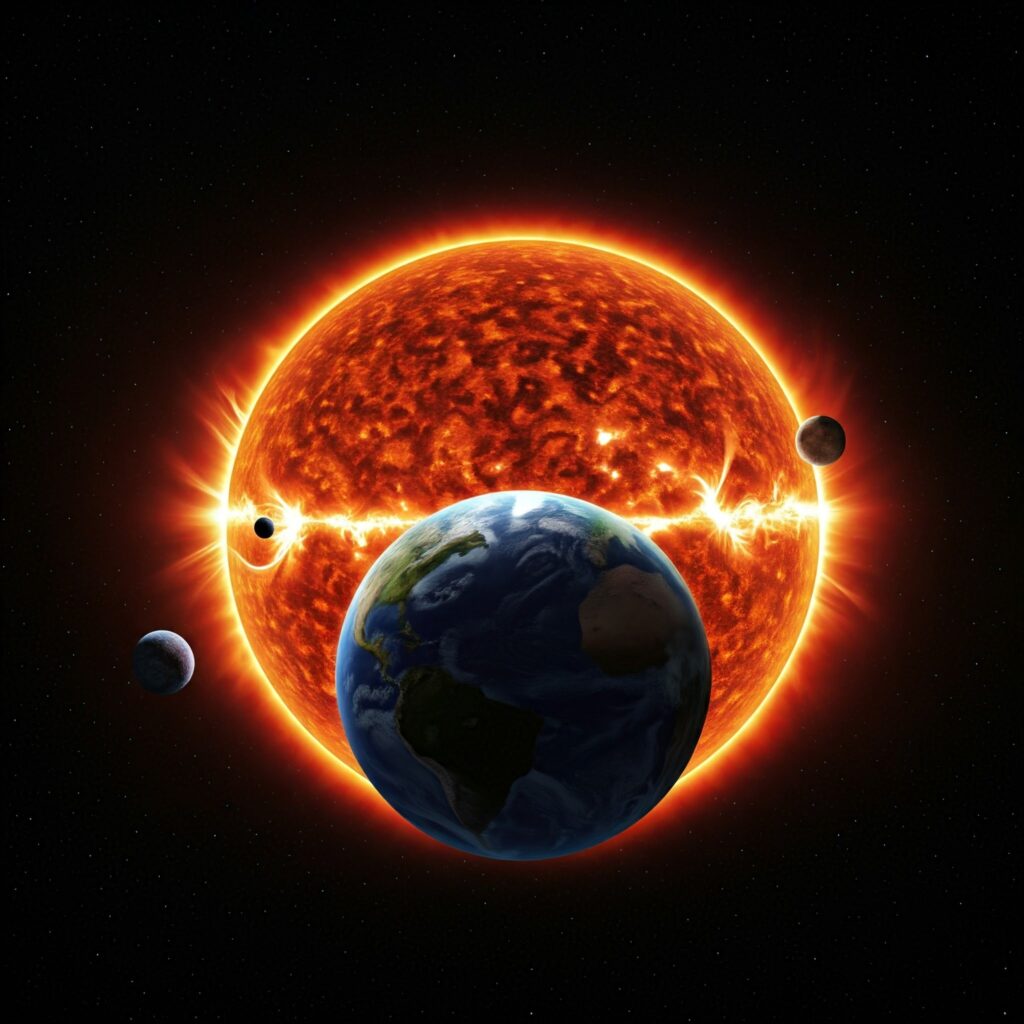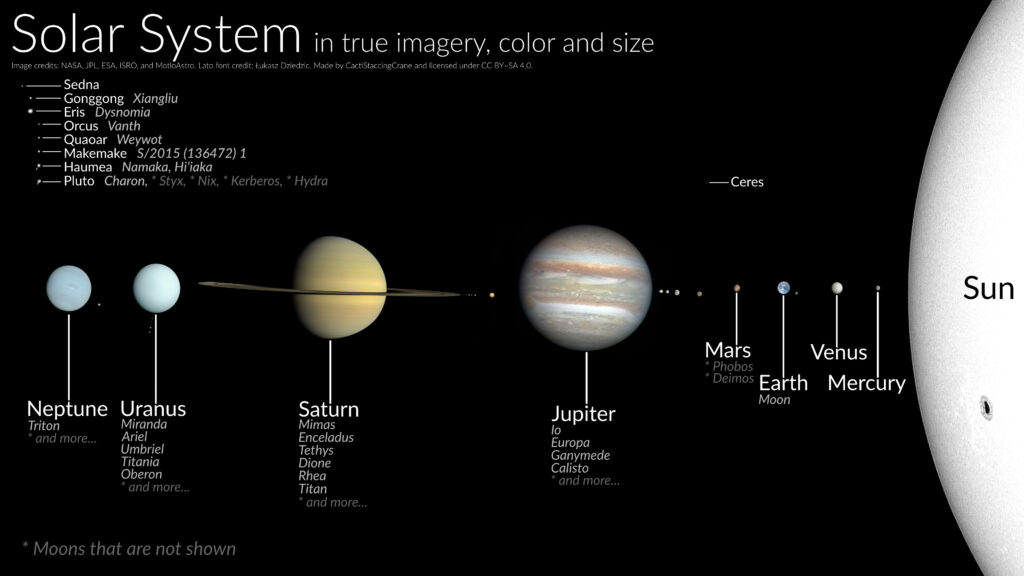The solar system is not just a group of planets slowly orbiting the Sun. It is a lively, moving force participating in a cosmic dance of the infinite between space & time. Everything from the orbit of planets to the incredible movement of our entire solar system through the galaxy there is a lot happening out there. Let us now set off on a journey to know how our solar system moves, why in such fashion and what does it mean for us Earthlings?
The Planetary Waltz: Orbiting the Sun
Perhaps the most well-known motion in the solar system is that of the planets around the Sun. However, ever ask yourself what keeps them going? Essentially, there are two forces in play here — gravity and inertia.
- Gravity: The massive size of the Sun creates a gravitational force that prevents planets from flying away into deep space.
- Inertia: Simultaneously, the planets are moving from their momentum in a linear direction. That balance ends up with the elliptical orbits.

Did you know that? The Earth moves around the Sun at an average speed of approximately 67,000 miles (107,000 kilometers) per hour. Which is sufficient to make a full lap across the equator in less than two minutes!
Elliptical Orbits
The planets do not precisely circle along their orbits. More specifically, their paths are elliptical (they have a major and minor axis with the Sun located at one focal point). Johannes Kepler first wrote about this in the early 17th century, and his laws of planetary motion still represent a good working understanding of orbits.
Kepler’s First Law: Planets move in elliptical orbits with the Sun at one focus.
Kepler’s Second Law: A planet sweeps out equal areas in its orbit in equal times, and therefore planets speed up when close to the Sun and slow down when far away from it,
How Solar System Spins: Rotates on Its Axis
In addition to revolving around the Sun, planets also spin on their axes. That’s how we have day and then night. The Sun itself rotates on its axis, going around once every 27 days or so. Differential rotation is actually what we see on the Sun, its equator spins more rapidly than its poles.
Our 24 hour day is dictated by the rotation of Earth, and Earth is gradually slowing down. Tidal forces working with the Moon are gradually extending Earth’s day by approximately 1.7 milliseconds every century. In billions of years, we are going to have longer days!
The Grand Journey: Moving Through the Milky Way
Now is where it gets really exciting! Not only, but our entire solar system is in motion — moving through space as a part of the Milky Way galaxy. The Sun – with its entourage of planets, moons, asteroids and comets — circles the galactic center.
Galactic Orbit
In the same way that the gravity of the Sun holds the planets in orbit, so does the gravity of our galaxy hold our solar system locked to it. The solar system revolves around the galactic center once about every 225-250 million years. One such full rotation/calendar year around the Milky Way is known as a galactic year (or cosmic year). A helpful way to put it into perspective is the last time that the solar system was in its current place, dinosaurs walked upon the Earth.
Our Speed Through Space
Relative to the galactic center, our solar system travels at a blistering pace of 514,000 mph (828,000 kph). Despite this tremendous speed, we don’t feel it because everything around us (Earth, atmosphere, Moon) moves at the same rate.
The Solar System’s “Wobble”
The solar system doesn’t trace a flat and smooth path as it orbits around the galactic center. It oscillates up and down the galactic plane, crossing it about every 30 million years. The vertical movement is induced by the collective gravity from nearby stars and changes in density throughout the galaxy.

Indeed, some scientists posit a connection between these periodic crossings and mass extinction events here on Earth. The Earth encounters more cosmic debris as the solar system moves through denser regions of the galaxy and potentially increases asteroid impacts on our planet.
The Solar Apex: Where Are We Going?
The solar system is not just orbiting the galactic center, it also moves with respect to nearby stars. It is aimed at a point in the sky in the constellation Hercules, called the solar apex. In other words, the solar system is moving through the galaxy like a car down a highway with stars and interstellar clouds plummeting past.

The reason we observe redshifts and blueshifts in light from other stars is this motion. Stars toward which the solar system is headed have their light shifted to the blue (blueshift). And stars that we were moving away from look redder (redshift).
A Moving Solar Neighborhood
The solar system does not travel through the galaxy in isolation. It’s a part of space known as the Local Interstellar Cloud, an area full of gas and dust. Beyond this is the Local Bubble, an even larger area of hot, low-density gas that is thought to have been created by ancient supernovae.
Our closest neighbor, Proxima Centauri, is moving too. Gliese 710, a star that will come close enough to the that it will disrupt the Oort Cloud to send comets into the inner solar system in a little more than 10,000 years.
What Drives All This Motion?
The solar system is in its motion by the forces of nature acting upon it like gravity. The powerful pull of the Milky Way keeps the solar system in orbit while close encounters with stars and giant clouds of gas and dust influence its path.
The cosmic collisions and gravitational encounters also play a role here. A compelling example is the merger of the Milky Way and Andromeda Galaxy, which will in about 4.5 billion years cause an orbital shift into a new path for our solar system. It serves to remind us that, even though the solar system may appear almost stationary and predictable on human time scales, the universe is not static.
Conclusion: A Journey Without An End
Each wobble, whether a tiny jiggle of individual planets or a majestic orbit around the galactic center, contains information in its motion about the forces that have shaped it. It’s humbling to realize that while we may feel stationary, we are part of an epic multi-billion year journey.
The motion of our solar system gives us insight into universal mechanics — and even fleeting feelings about the part we play in it. So, the next time you gaze at the night sky just know that we are all travelers on a cosmic journey through space at unimaginable speed.

Hi, I’m Debashis! I’m a space enthusiast and science writer with a passion for exploring the mysteries of the universe. From black holes to exoplanets and everything in between, I love diving deep into cosmic phenomena and sharing what I learn in an engaging, easy-to-understand way.
If you’d like to talk about space, share your thoughts, or collaborate on a project, feel free to put a comment on the post or drop me an email at debashis.mandal[at]gmail.com.


